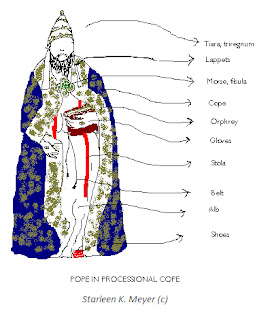This morning, a last name, new to me, caught my attention:...More......
...Gaudioso.
It comes from "gaudio"--happiness--that is derived from "gaudere," the Latin verb for "to be happy."
What a great name! "Nomen omen," Italians say, that is, the opposite of "A rose by any other name would smell as sweet": "the name, in and of itself, is a prediction."
"Gaudio" appears in a pat phrase still used a lot: "Mal comune mezzo gaudio"...i.e., if someone else also has your bad experience, too, you can be halfway happy. Notice the note of spite. It's not quite the same as, but is the Italian equivalent of, "misery loves company".
These subtle differences between languages are so intriguing, so telling about the underlying mentalities. So fascinating.
Don't go sprinkling your Italian conversation with "gaudio," though...it's very old-fashioned, the rough equivalent of speaking like Shakespeare in Brooklyn, or Poughkeepsie ("Pace," as the Italians say, "peace" / "apologies" to the worthy residents of these assuredly lovely communities.)
Be careful, too, of what we language teachers call "false friends," words in two different languages that look similar, but mean something completely different.
You can be "gaudioso" without being "gaudy."
Enjoy!
PHOTO: My snap taken in the metro stop at Rho-Pera for the new Fiera, dated December 9, 2013, 5:30 P.M., for your personal non-commercial viewing pleasure.


